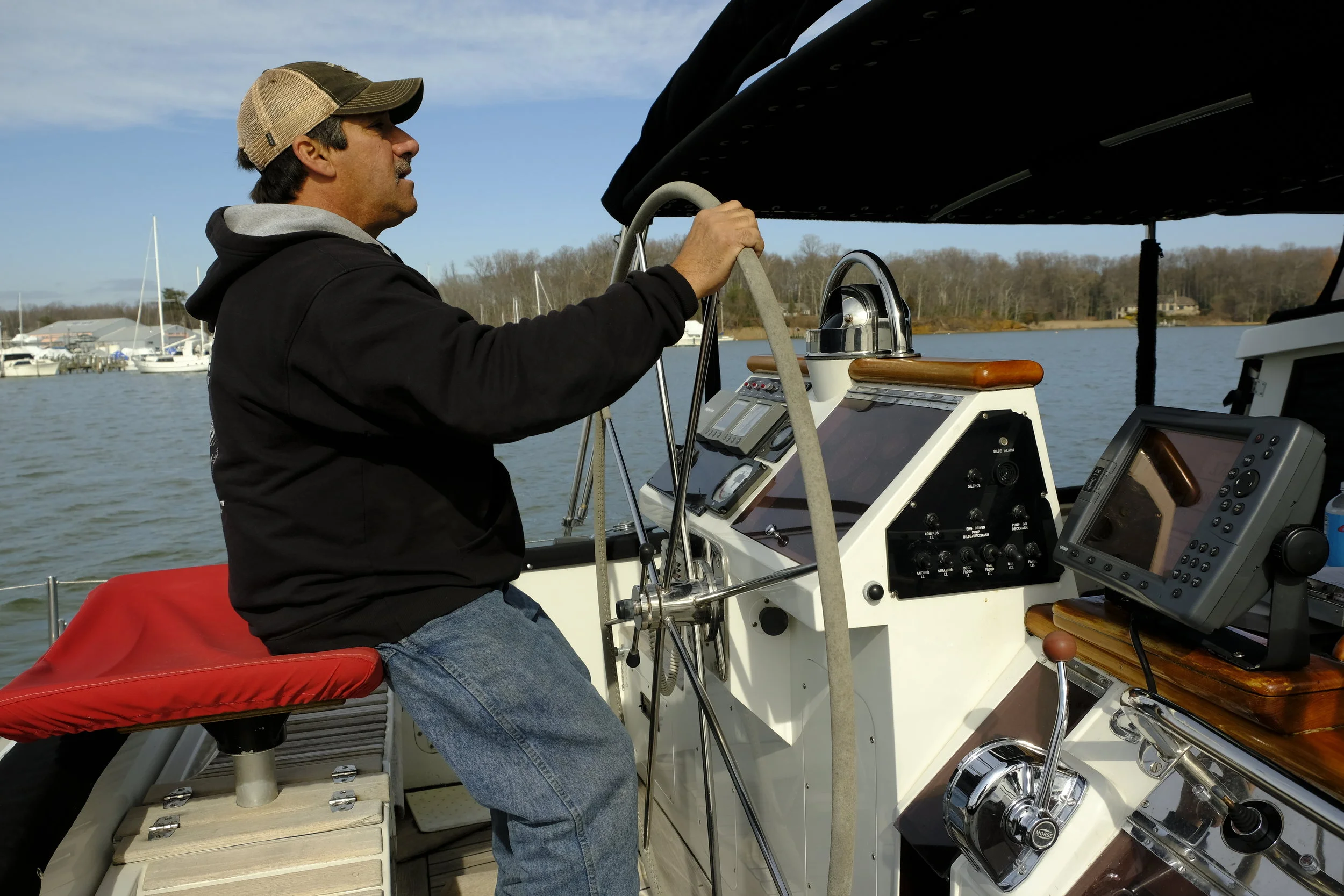There is a wonderful cruising boat that occasionally comes in and out of my life. Mustang is a Camper Nicholson 83, built on an Ocean 80 Whitbread Round the World racing hull, finished by Camper Nicholson as a cruising boat. And she's done some cruising, to the tune of five circumnavigations. Her current owner is a friend, and while he expects to sell her in the future, she has given his family a whole lot of memories.
A boat like this is special in her size, but also in the design of her systems and equipment. The engine in Mustang is a Cummins 210hp diesel engine with over 8900 hours. And this is not her first engine. As I said, this baby has done some cruising.
We were aboard a couple of years ago on a sail from Newport to Bermuda, a trip of only a few days with such a large boat. Great trip, as she sails and motors as you might expect: fast and stable. This is not a boat for the ICW or even long coastal passages. If you hanker to head back to the Med via a visit to the Azores, this might be a good choice. She returned this summer to Bermuda for the America's Cup, and I believe she has been in all oceans.
For the second time in two days, I ran into Jeff Leitch from Bay Shore Marine, who I'd talked to while checking out a sunken sailboat. One of Jeff's techs replaced an exhaust elbow, some seals, and other things on this engine and Jeff was here for a sea trial before the boat sails south to St. Augustine for major work and maintenance. I could tell Jeff was impressed as he stepped aboard, as this is not your typical Annapolis-based Chesapeake Bay sailboat.
Note the engine hours on the work form under the IR thermometer.
While Jeff went below to check the fluids on the engine and gears, I spoke with the owner about his plans for the summer. Things are somewhat up in the air, beyond installing new teak decks by St. Augustine Marine in Florida. He recently had the hydraulic furling completely rebuilt, and of course there is always ongoing maintenance. The winches and all sail handling gear are hydraulically driven, as is the retractable bow thruster that pushes the bow most impressively.
Jeff Leitch check fluids and later under way for any leaks or other abnormalities in the spacious engine room.
The Cummins' marine gear mates to a Hundested controllable pitch propeller (CPP) that is controlled at both helm stations. The captain runs the engine at 1,400 rpm much of the time (a bit lower than Jeff likes...prefers up above 1,600) and dials in three degree of pitch to get the boat moving along nicely. Keeping an eye on the engine's temperature gauge as well as the engine exhaust temperature, is how to keep the running gear at its sweet spot at sea, without stressing the engine while not loading it enough. As we backed out and motored out of the South River, Jeff grabbed his portable infrared thermometer and flashlight and went back into the engine room to shoot readings off various places on the engine, its connections, the drivetrain, and CPP coupling. He occasionally came back up to discuss his findings with the owner as they determined that all was well or something needed additional adjustment.
No leaks were noted, yet there was a small but noticeable vibration noticed at the helm and in the engine room. Not familiar with the normal operating vibrations, noises, and temperatures on this boat, Jeff, who has owned Bay Shore Marine for 30 years, still knew something wasn't quite perfect. It soon became clear that there was a minor misalignment between the CPP coupling and engine, and it remains when they dialed the prop back to two degrees.
As we turned around to head back to the dock, Jeff resolved to have his guy pull the CPP coupling back off and realign the coupling to eliminate this small alignment issue, which also had registered a slight increase in temperature on his portable thermometer.
Seemed a reasonable question so I asked them if it was normal procedure to back up Mustang using the transmission or simply reversing the pitch of the propeller? Good question, apparently, as they discussed it a bit and decided both ways worked, depending on which direction you wanted the prop walk to push the stern. Sounds kind of a cool option, albeit a very expensive option.
Jeff Leitch describes the inner workings of a Hundested controllable pitch propeller. Not something one sees every day.
The alignment issue needs to get resolved in the next couple of weeks, because Mustang heads to St. Augustine for new teak decks.
You get a sense of the size of the equipment on this large bluewater cruising boat.
Have a great week.














